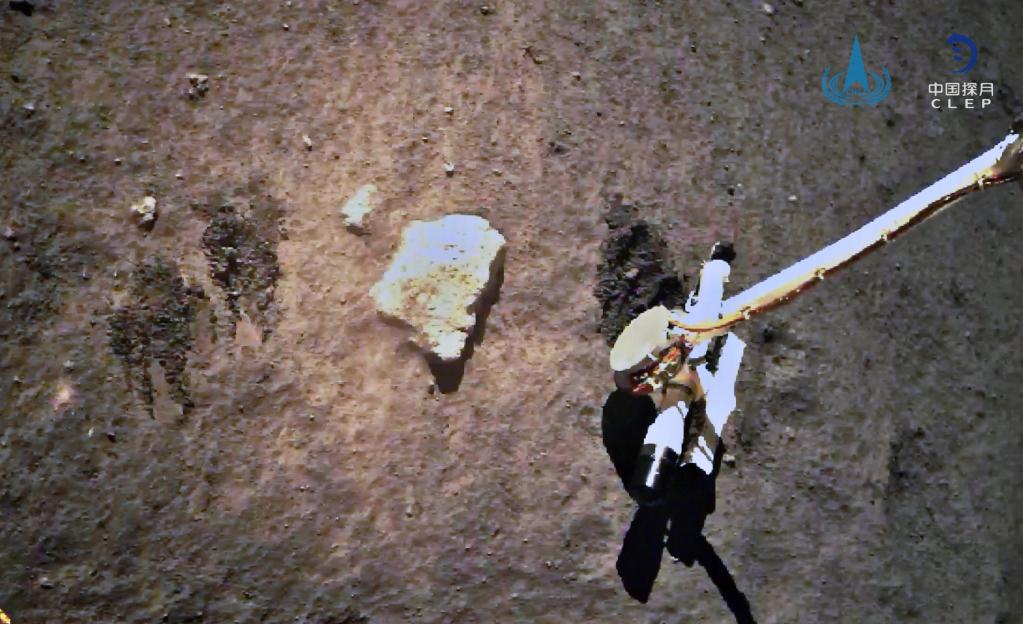Researchers discover possible new water reservoir on Moon


BEIJING -- Planetary scientists in China found hints of a new water reservoir on the Moon in Chang'e-5 samples that show the potential for in-situ resource utilization by future lunar and deep space exploration missions.
The team of researchers led by scientists from the Institute of Geology and Geophysics under the Chinese Academy of Sciences identified that glass beads in Chang'e 5 lunar soils, which were formed from the cooling of melted material ejected by impacts, contain a higher amount of solar wind-derived water than previously thought.
The Chang'e 5 probe, which returned to Earth on Dec 17, 2020, retrieved a total of 1,731 grams of lunar samples, consisting primarily of rocks and soil from the lunar surface.
WATER MYSTERY
Previous lunar missions have revealed the presence of water ice on the Moon. The surface water displays rise and fall within a lunar day and is being lost to space, indicating that there should be a hydrated layer or reservoir at depth in lunar soils to sustain the retention, release, and replenishment of lunar surface water, according to the study.
However, the water inventories of fine mineral grains in lunar soils, impact-produced agglutinates, volcanic rocks and glass beads formed in volcanic eruptions are unable to explain the very water cycle, the researchers said.
Therefore, some lunar researchers inferred the existence of a yet-unidentified water reservoir in lunar soils that has the capacity to buffer that water cycle.
According to the researchers, the interaction of the solar wind with surface materials could produce water and sustain the water cycle, but the host of such a reservoir has yet to be found.
GLASS BEADS
The study published on Monday in Nature Geoscience showed that the impact glass beads are likely a new water reservoir on the Moon.
The group of Chinese researchers led by Hu Sen analyzed the water content within glass beads produced by impact events, extracted from Chang'e 5 lunar soil samples.
Hu's group analyzed the glass beads' appearance, element composition, water abundance and hydrogen isotope composition, and found that the water in them comes from solar winds, with a water abundance up to about 2,000 ppm.
They estimated that the water contributed by impact glass beads to lunar soils could amount to as much as 270 trillion kg, yet way less than in oceans of the Earth.
After the glass beads were formed by impact, the water caused by solar wind entered into the beads by diffusion, according to the study.
The researchers also analyzed water abundance along six transects in five glass beads, which showed the hydration profiles of solar wind-derived water.
They said the impact glass bead recorded the dynamic ingress and egress of solar wind-derived water, and acted as a sponge for buffering the lunar surface water cycle.
The distribution of water within individual beads showed that water can rapidly accumulate in glass beads by diffusion over only a few years and be rapidly released, which presented an efficient recharge mechanism for surface water cycle, according to the study.
"These findings indicate that the impact glasses on the surface of the Moon are capable of storing solar wind-derived water and releasing it into space," said Hu, the paper's corresponding author.
The water trapped in impact glass beads is relatively easy to extract and could represent a potential water resource for future lunar exploration, Hu said.
Furthermore, the findings offer clues to the water origins in low latitude in other airless bodies in the solar system like Mercury and Vesta since impact glass may host similar water reservoirs on other airless bodies, Hu added.
The study was a collaborative effort between Nanjing University, the Open University, the Natural History Museum, the University of Manchester and the University of Science and Technology of China.
- Number of foreign visits increases over threefold
- Shopping mall hosts 'space-out' competition in China
- Vlogger faces prison time, fines for killing wild boar in Beijing
- PBOC former vice-governor pleads guilty for bribery
- Shenzhou XVI crew members awarded for explorations
- China awards medals to Shenzhou-16 astronauts





































